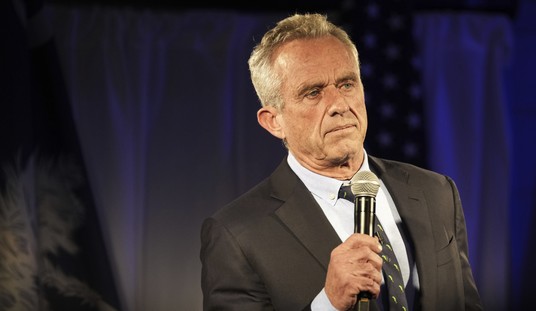Dëvar Torah — Parashath Mas‘ei-Mattoth Numbers XXX, 2 — XXXV, 13
This week’s parasha, the last reading in the Book of Numbers, opens with the topic of vows and oaths:
Ish ki yiddor neder la-Shem o hishava‘ shëvu‘a o lessor issar ‘al nafsho lo’ yachél dëvaro këchol hayotzé’ mipiv ya‘ase.
A man who will vow a vow to Ha-Shem or swear an oath to prohibit a prohibition on himself, his word will not be nullified; he will act according to everything which comes out of his mouth. (XXX, 3).
Stop for a moment to consider what this verse actually means, and the implications will be seen to be truly staggering: the Torah, the “blueprint” according to which the world has been made and our “manual” for its use, consists of 613 mitzvoth (“commandments”), 365 of which are negative and 248 of which are positive. For 3329 years, the Jewish tradition has maintained that this number is immutable. Yet here, in the institution of the neder and the shëvu‘a, the Torah seems to grant a specific right to those who observe it to “amend” it in a certain sense by adding obligations and prohibitions which take effect and have objective halachic significance.
To take one example, if one vows a particular animal as a qorban to the Temple, for instance, and that animal is subsequently slaughtered and eaten as chullin (“non-sacrificial meat”), the consequence for the perpetrator, whether the original owner or a third party, is mitha bidei shamayim (“death at the hands of Heaven”) — all because of a condition wholly created by the neder. Kol hayotzé’ mipiv ya‘ase!
Against this background, let us consider the verse that precedes it and introduces the discussion of nëdarim and shëvu‘oth. The first verse in our parasha reads:
Vayëdabbér Moshe el rashei hamattoth livnei Yisra’él lémor, Ze hadavar asher tzivva Ha-Shem.
And Moshe spoke to the heads of the tribes of the bënei Yisra’él to say, This is the word which Ha-Shem has commanded.
Rashi quotes the Sifrei on this verse:
Moshe prophesied with “thus said Ha-Shem, around midnight” (Exodus XI, 41) and the other prophets also prophesied with “Thus said Ha-Shem”; Moshe was superior to them, for he also prophesied with “This is the word.”
The Sifrei here is telling us that it is the phrase ze hadavar asher tzivva Ha-Shem prefacing Moshe’s prophecy which characterizes its superiority over the pronouncements of Israel’s other prophets. However, this is hardly the first place where this phrase occurs: that is Exodus XVI, 16. And it occurs in at least five other places in Exodus, Leviticus, and Numbers. Why, then, did the Rabbis wait until our parasha near the end of Numbers to make their point? What is it about ze hadavar that makes it so markedly superior to ko amar Ha-Shem?
The Rabbis tell us (Sanhedrin 89a) concerning true prophets: “No two prophets prophesy in the same style.” At first glance, this seems counter-intuitive: on the contrary, one might expect one of the hallmarks of authentic prophecy to be precise agreement on all of the details, if two different prophets transmit messages concerning the same event. After all, if we are dealing with true prophecies, the information being relayed can come from only one Divine Source. Why can we not expect the statements to confirm and corroborate each other precisely?
The key to this lies in an observation made in the course of another Talmudic passage, in which the Rabbis rule:
One who sees crowds of Jews says, Blessed is the Wise One of secrets, for their opinions are not similar one to the other, just as their faces are not similar one to the other. (Bërachoth 58a)
All human beings differ in their opinions, preferences, personalities, powers of observation and description, etc. It is a very well-known technique in evaluating the testimony of witnesses in court cases that one pay very careful attention to their descriptions of the incident in question. If there is a curious uniformity in all of the details cited, as well as use of the same descriptive language by two or more of the witnesses, this is a tell-tale sign that they have been “coached,” and at least some of them are not honestly relaying what they claim to have observed.
Prophecy, as a human activity (albeit a very exalted one), is similarly individual, and for much the same reason. The same prophetic vision, vouchsafed to two different prophets, is observed differently by each of them according to his personal idiosyncrasies. Different details, different emphases, come to the fore and strike each one’s perception and lodge in his memory. Then the attempt to describe and convey the vision to the non-prophetic general public calls upon each individual’s very different powers of expression and description. Hence, if two prophets do speak in the same style, it may be taken as a sure sign that at least one of them is not genuine, and “coached” like the witnesses.
In light of the above, it would not seem remiss to understand Moshe’s prophecy as broadly similar to that of other prophets, that the descriptions of Moshe’s communications, panim el panim (“face to face,” Deuteronomy XXXIV, 10) with the Divine are likewise colored by subjective elements and so contain something of Moshe’s personality quirks as do those of his successors. The verse’s claim vëlo’ qam navi’ ‘od bëYisra’él këMoshe (“and there did not rise another prophet in Israel like Moshe,” ibid.) is therefore simply a matter of degree.
G-d forbid! This is where our verse comes in. The level of prophecy reached by Moshe was in another realm altogether from that of the “run of the mill” prophets who succeeded him (and who are likewise unimaginably greater than the greatest people of our debased age, which does not know prophecy). Moshe merited a perfectly pure, clear vision with no substantive limitations at all. Its transmission to us, far from being the less exact “indirect quotation” characteristic of his predecessors, is “direct speech,” literally and absolutely ze hadavar asher tzivva Ha-Shem (for the explanation of the imprecision implicit in Moshe’s use of ko amar ha-Shem in Exodus, cf. Rashi ad loc.)
So we have answered the second of our questions. It remains to be explained why the Rabbis chose this particular verse in this particular location to make the point.
To address this, we need to understand why the Torah contains the remarkable provisions of nëdarim and shëvu‘oth with their capacity to heap upon an individual additional issurim and mitzvoth (for any obligation the neglect of which calls forth a halachic punishment means that one is, in effect, mëtzuvve, “commanded,” to carry it out, the very definition of a mitzva).
The fundamental condition which underlies this institution is Man’s status as the tzelem Elo-him (“image of G-d”). Rabbi Shëné’ur Zalman of Liadi, in the Tanya (sha‘ar haYichud vëhaYir’a II), tells us that the human soul is a chéleq Elo-hi mima‘al, a “Divine portion from Above.” Rabbi Chayyim Volozhiner (principal disciple of the Ga’on of Vilna), defines and portrays the precise significance of this exigency in the first six chapters of Sha‘ar I of his Nefesh haChayyim, explaining that Man contains a portion of each of the creative forces which Ha-Shem used first to create the universe and ever after to run it, implied in the plural form taken by the Divine name Elo-him. It is in this sense of the replication of Ha-Shem’s multifarious creative powers in Man, rather than in some crude anthropomorphic conception of G-d, that Man is the tzelem Elo-him (as opposed to any other Divine name).
But Man’s creative capacity is of a different order than that of Ha-Shem, and here R’ Chayyim uses the analogy of a carpenter. A carpenter does not create his own raw materials; instead he takes materials already extant. He uses his creative skill first to visualize a new form for them, and then to cut and saw and hammer them into the new form.
Similarly, it seems to me, nëdarim and shëvu‘oth do not create wholly new mitzvoth. They take the “raw material” offered by the issurim and hetérim already present in the Torah (in the institution of the sacrifices offered in the Temple, for instance) and enable Man to use his lesser creative faculty to “form” that “raw material” into the nëdarim and nëdavoth (“vows” and “donations”) mentioned near the end of last week’s parasha (cf. XXIX, 39).
As already noted supra, the uniqueness of our verse does not lie in the phrase ze hadavar. What is unique about our verse is the position of that phrase in it. In other places in which it occurs, we read something like ze hadavar asher tzivva Ha-Shem lémor (“this is the word which Ha-Shem has commanded to say”). Here (look at the exact wording of the verse again) the very thing which has been commanded to say is ze hadavar asher tzivva Ha-Shem. The exercise of human creativity, channeled and directed to use the “raw material” of Torah and mitzvoth to produce more Torah and mitzvoth, is itself the very thing which Ha-Shem has commanded!
It is precisely because we are so directed, and that our “products” (unlike the original “raw material” transmitted through Moshe) are individualized in that they contain a subjective content according to our individual idiosyncrasies (like the structure conceived and built by R’ Chayyim’s carpenter) that the Rabbis saw fit to proclaim here the unique and particular objectivity of the Torah revealed to Moshe and transmitted by him completely and eternally free of any subjective content whatever.








Join the conversation as a VIP Member